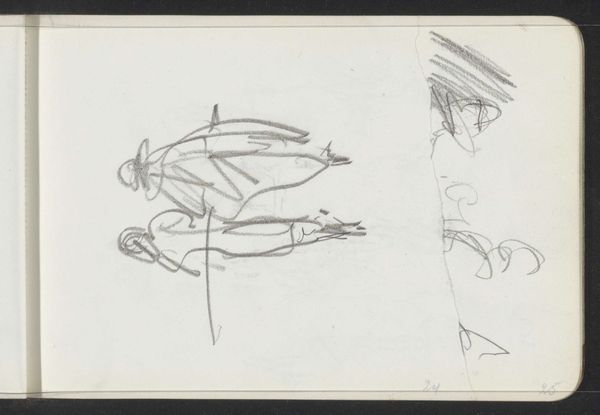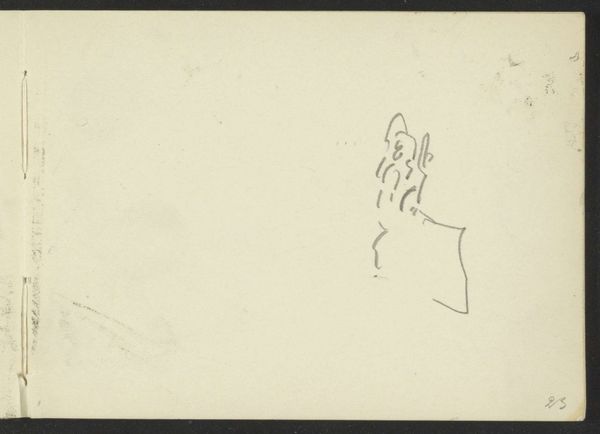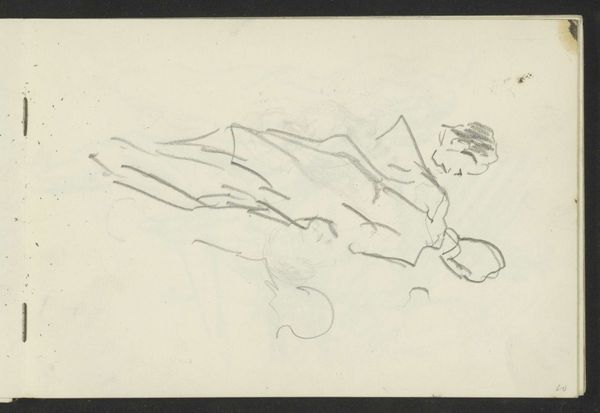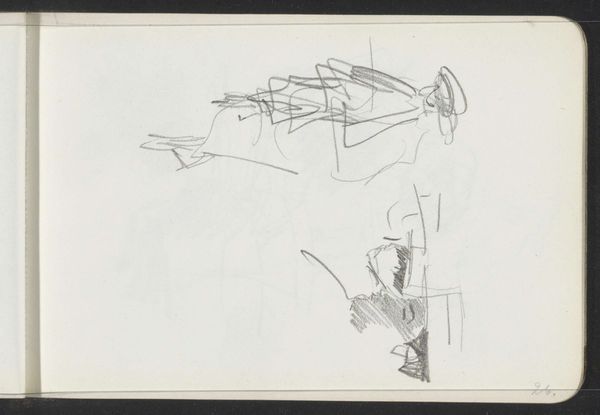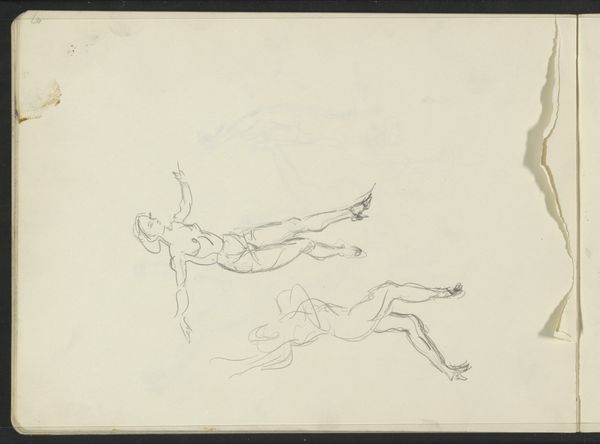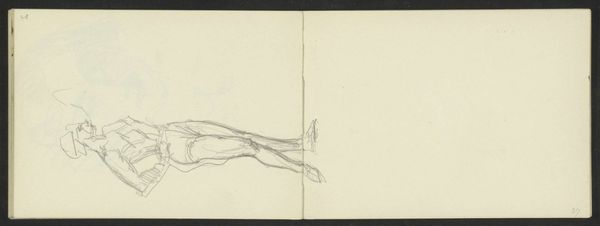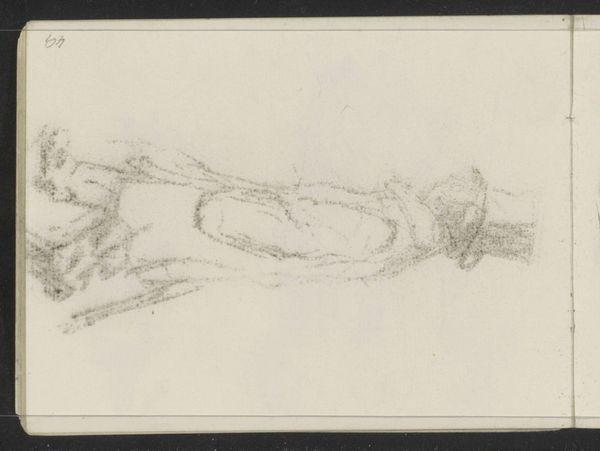
Copyright: Rijks Museum: Open Domain
Curator: This is "Ruiter" a pen and ink sketch by Isaac Israels, dating somewhere between 1875 and 1934. It's currently held in the Rijksmuseum. Editor: What strikes me is the figure's posture; there is a pronounced elegance suggested through the line work despite it appearing hastily rendered. I am sensing an understated symbolism around social position and sartorial conventions. Curator: Interesting observation. From a material perspective, note how Israels uses the simplicity of pen and ink not just for capturing a likeness but likely as an exercise to explore form. Given its likely presence in a sketchbook it offers a glimpse into the labor involved in developing the finished article and its position within the artist’s larger body of work. It suggests a degree of experimentation, of using the medium to work out pictorial problems quickly. Editor: It also brings into question what exactly this figure, perched and aloof, represents. His hat and attire may serve as an indicator of some archetype that was familiar, a knowing reference understood during the period but not by all modern viewers, pointing to forgotten social and cultural memory now coded through a few brisk marks. Curator: And the sketchy lines themselves; their lightness lends an ephemeral quality. Do we consider what these economical choices convey within the art market itself and its implications within larger systems of consumption, collecting, or valuation? This is more than simply a quickly drawn idea; there are socio-economic layers here that bear interrogation. Editor: That fleeting quality actually amplifies his impact, I feel. Like he's a ghost of a memory, still recognizable but fading. It reflects an underlying melancholy, a kind of collective forgetting of what these symbols and figures originally represented. He haunts us, I believe. Curator: A poignant way to express the intersection between materiality, artistic intention and shifting cultural context. Editor: Indeed, this tiny ink sketch speaks volumes if you consider all the cultural baggage imagery carries with it. Thanks for pointing me back toward those basic facts on production, they do allow an unexpected depth when looked at as objects charged with meaning.
Comments
No comments
Be the first to comment and join the conversation on the ultimate creative platform.

